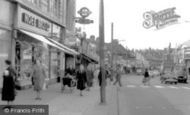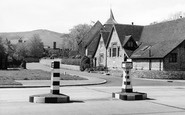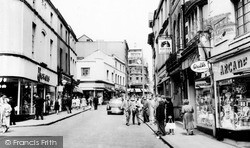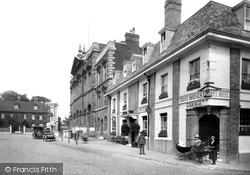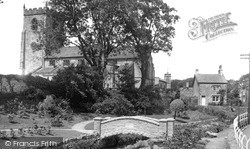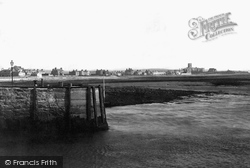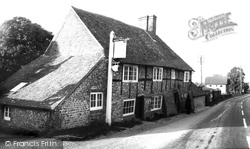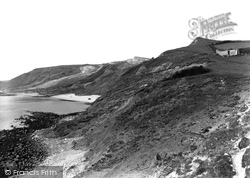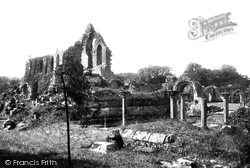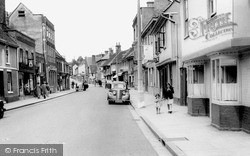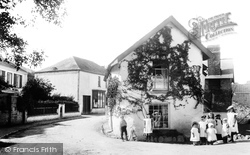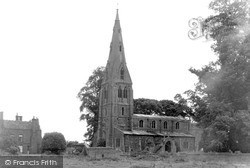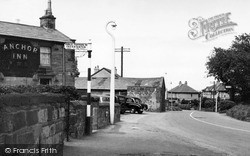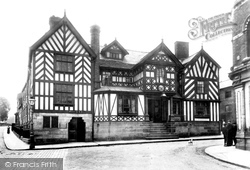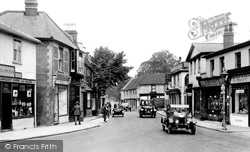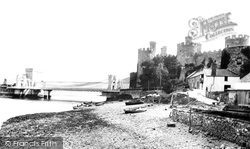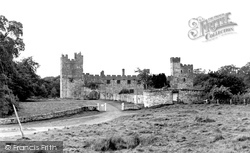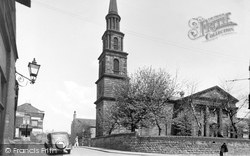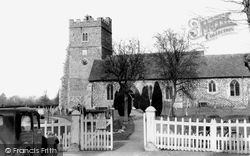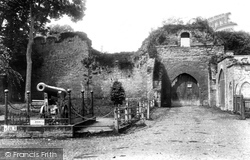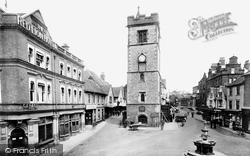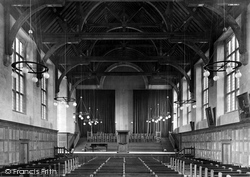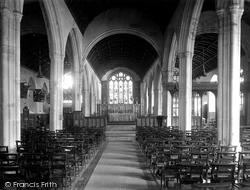Places
Sorry, no places were found that related to your search.
Photos
Sorry, no photos were found that related to your search.
Maps
1 maps found.
Books
Sorry, no books were found that related to your search.
Memories
826 memories found. Showing results 71 to 80.
Wembley High Road
I grew up in Wembley, late 60’s to early 80’s. used to hang around the high road a lot . Who remembers a trendy shop called Screws ,it had like a coffee/cafeteria downstairs anc a record booth that you could listen to before you ...Read more
A memory of Wembley by
Wembley High Rd. And Ealing Rd.
One of my most popular places to hang out was Finley's Tobacco shop on the High Rd. They had a really nice coffee shop downstairs. I also remember a cafe on Ealing Rd. just past Chaplin Rd where a few bikers used to ...Read more
A memory of Wembley in 1958 by
Wembley
I was born in Park Royal Hospital in Dec 1948. I remember Woolworths in Wembley town had an exit on a corner of the high street and there were trolley buses all round. We used to shop for toys and games in George Arthur's which seemed huge ...Read more
A memory of Wembley in 1956 by
Waterloo Chapel Bath Street Liverpool
Hi I was born in Westkirby the Wirral but have been living in Denmark since Iwas 18. The other day I came across an old box at a car boot sale in Denmark with the letters Waterloo Chapel Liverpool ...Read more
A memory of Waterloo
Waterloo In The 1940s To 1950s
My early memories are of Waterloo where I used to live at Winchester Avenue until 1958. My father died there in 1989. On College Road there were air raid shelters which me and other kids played in after the ...Read more
A memory of Waterloo by
Wartime Memories Of Lewisham And New Cross
My mother, then called Billie Gwilliam, was living in New Cross in South London with her parents Bill and Connie Gwilliam during the Blitz of the Second World War, and has many memories of what it was ...Read more
A memory of Lewisham in 1940 by
Wartime In Ickburgh Fields
I was evacuated with my mother to a back to back semi-detached flint cottage situated in a clearing in the pine forests. There was no sanitation or running water or electricity. There was a tiny kitchen with a black ...Read more
A memory of Ickburgh Fields by
Wartime In Ivybridge 1939
I was one of ten little girls, plus our teacher, who arrived in Ivybridge as evacuees from Acton, London, at the outbreak of the Second World War. We were taken to a hall (probably at the school) where we were ...Read more
A memory of Ivybridge in 1940 by
Wardley As Was
Well, I was born in Lingey Gardens (at my grandparents' house, John and Ethel Holdsworth) in 1948, but I best remember Wardley when I was about 8 years. I remember the NCB coal waggon tipping coal in the road outside the ...Read more
A memory of Wardley in 1956 by
Wannock Willingdon
We moved from Eastbourne to Wannock Lane, Willingdon in 1963 as my mother felt it would be a nice place for us to grow up at the foot of the Downs. It certainly was, Willingdon School fulfilled us academically & ...Read more
A memory of Willingdon in 1963 by
Captions
231 captions found. Showing results 169 to 192.
The jeweller`s shop, H Samuel (centre distance), which was beneath the clock, was once the former Post Office. Samuel`s Corner had a certain reputation in Merthyr Tydfil.
To the right of County Hall is the Bell Hotel, a Regency building which was recast in 1919 with the addition of a dormered roof storey.
Coronation Gardens commemorate the crowning of Queen Elizabeth II. The flower beds are a riot of colour in high summer; they lie alongside the stream that runs through the main street.
Near the college is Hango Hill, the scene in 1663 of the execution of the Manx patriot William Christian (Illian Dohne) for his role in the rebellion of 1651.
In the background are the romantic ruins of the Augustinian priory, and to the right are the tumbling waters of the River Wharfe.
Houghton is a hamlet with a long stone bridge across the tidal River Arun.
We are looking westwards to the snout of Goggin's Barrow (right), Black Head (centre), and Redcliff Point (left) above Weymouth Bay.
Lying peacefully on the banks of the Ure, the land was given to the monks by Conan, son of Alan the Red, who built Richmond Castle.
The higgledy-piggledy row of pubs, shops and dwellings has hardly changed over the years.
As much as any other, this view illustrates the timelessness of North Devon.
Here we see Warboys church, with the 17th-century Dutch-influenced manor house next door.
The Anchor Inn (left) is a solid sandstone building, and its contents have refreshed the inhabitants of Irby for over 100 years.
Later photographs from the 1950s show no change to the building apart from the addition of a hanging sign at the front, and the replacement of the gas lamp-post with an electric, concrete one.
In the background are the romantic ruins of the Augustinian priory, and to the right are the tumbling waters of the River Wharfe.
This view, showing the centre of Ewell village, was taken looking north towards the Horse Pond and Spring Corner, and includes several splendid examples of the motor vehicles of the period.
Four small children watch the photographer with interest as he immortalises this stretch of Wharf Road.
There are mussel beds at the mouth of the river, while freshwater oysters found upstream have been famous for their pearls. Telford's 1826 bridge measures 327 ft long.
A minor 14th-century castle, Naworth stands on a triangular piece of land by the river Irthling with deep ditch defences on three sides and a moat and drawbridge on the fourth.
The spire of St Peter's Church can be seen from all parts of Horbury.
The east window stained glass is from about 1840.
Perched on its cliff overlooking the rivers Teme and Corve, Ludlow was built in a strategic location on the Welsh borders.
A rare surviving example of an English belfry, the Clock Tower, built in 1411, stands at the centre of the city with the narrow mediaeval street of French Row on its left and the wider Market Place on
The fine and spacious interior was poor acoustically although in 1941 over 800 people crammed into the hall for the entire London Philharmonic Orchestra conducted by Sir Malcolm Sargent.
A similar view to the one above, but this follows work carried out to the chancel by Sir Charles Nicholson in 1932. Note also the new screen on the right for the Lady Chapel.
Places (0)
Photos (0)
Memories (826)
Books (0)
Maps (1)

